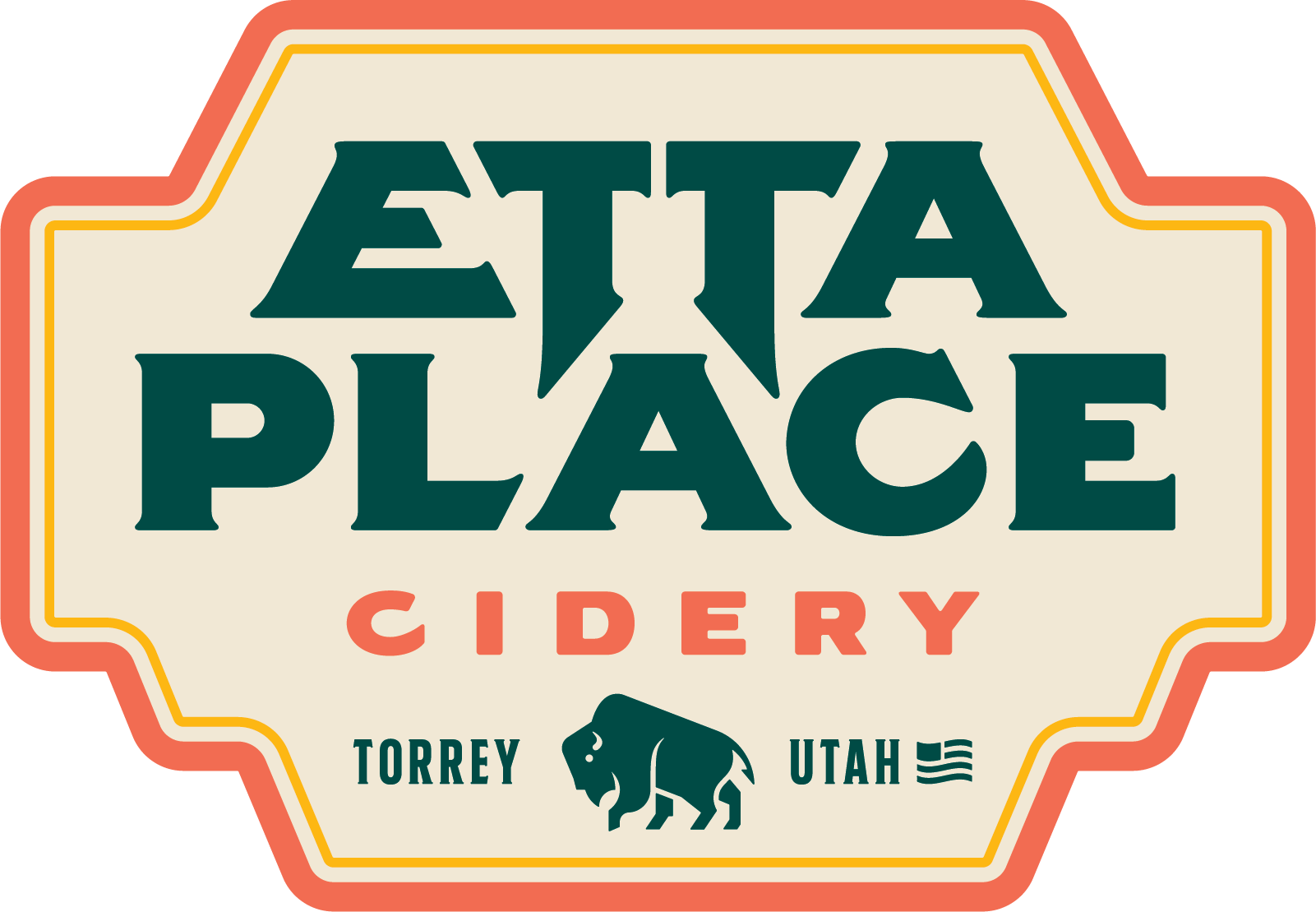Our Orchards

In the west, water makes or breaks a place. For Etta Place Cider, that’s where our story begins. When we (Ann and Robert) moved to Torrey, our home parcel came with irrigation rights, and in the west, “use it or lose it” is the law. As we were pondering the correct and best use of this precious resource, we ventured into Capitol Reef National Park during harvest season. Robert selected a perfect, tree-ripened apple that tasted nothing at all anything we’d ever bought from a grocery store. Could we too grow apples here?
We discovered hard cider through learning about the apples. We sampled as much as we could, traveling to upstate New York and Virginia to educate ourselves. In the spring of 2012, we moved to Torrey and planted the first 50 trees. We could find no one to advise us on which cider varieties would work at 7,000’, so we tried everything we could get our hands on. The Kingbird orchard is a wild experiment of rootstocks and cultivars that no one with an academic pomologist background could ever approve of. Nevertheless, some happy surprises resulted from our haphazard methods.
We acquired more land and water. We planted more trees. We waited patiently for our first harvest. In the meantime, we started hosting apple tastings here at the ranch. At first we gathered them from the park orchards and our neighbors’ yards. Every year, our guests voted for their favorites and we began planting those trees too, if we didn’t have them.
We still host apple tastings every year, but now they are open to the public and the fruit is harvested mostly from our orchards. People still contribute new-to-us apples to the tastings, and we still are planting more trees. Our plantings were selected for aromatics, flavors, acidity and tannins that separate an orchard-based cider from the rest.
In answer to one of our most frequently asked questions, here is the list of all our cultivars.
Key
Previous top 3 finishers in our tastings
Trees we recommend for home table fruit production (easy to train, fewer pest problems)
Our main cider cultivars
Cultivars on Slow Food’s Ark of Taste
- Aarguer Jubilaums
- Ashmeads Kernel
- Bedan
- Binet Rouge
- Black Limbertwig
- Blue Pearmain
- Bramleys Seedling
- Bramtot
- Brown Snout
- Browns Apple
- Burford’s Redflesh
- Calville Blanc
- Catshead
- Chenango Strawbery
- Chestnut Crab
- Chisel Jersey
- Coconut Crunch
- Coop 11
- Cornish Gilliflower
- Cortland
- Coxs Orange Pippin
- Dabinett
- Duchess of Oldenburg
- Edelborsdorfer
- Ellis Bitter
- Empire
- Erwin Bauer
- Fall Russet
- Esopus Spitzenburg
- Frequin Rouge
- Gaver Jubilant
- Geneva Crab
- Gibsons Golden Delicious
- Ginger Gold
- Golden Russet
- Graniwinkle
- Harrison
- Harry Masters Jersey
- Hudsons Golden Gem
- Karmijn de Sonneville
- Kerr
- Kidds Orange Red
- King of Tompkins Co
- Kingston Black
- Lady
- Liberty
- Major
- Nehou
- Newtown Pippin
- Noel de Champs
- Northern Spy
- NY73
- Opalescent
- Piel de Sapa
- Pink Pearl
- Pomme Gris
- Porters Perfection
- Pristine
- Puget Spice
- Red Giant Crab
- Redfield
- Ribston Pippin
- Royal Limbertwig
- Roxbury Russet
- Rubinette
- Snowdrift
- Somerset Redstreak
- Sops of Wine
- Stoke Red
- Sweet Coppin
- Tom Putt
- Uncle Joe’s Mac
- Vilberie
- Virginia Crab
- Waltham
- Wickson Crab
- Virginia Hewes Crab
- Winekist
- Winesap
- Wolf River
- Yarlington Mill




